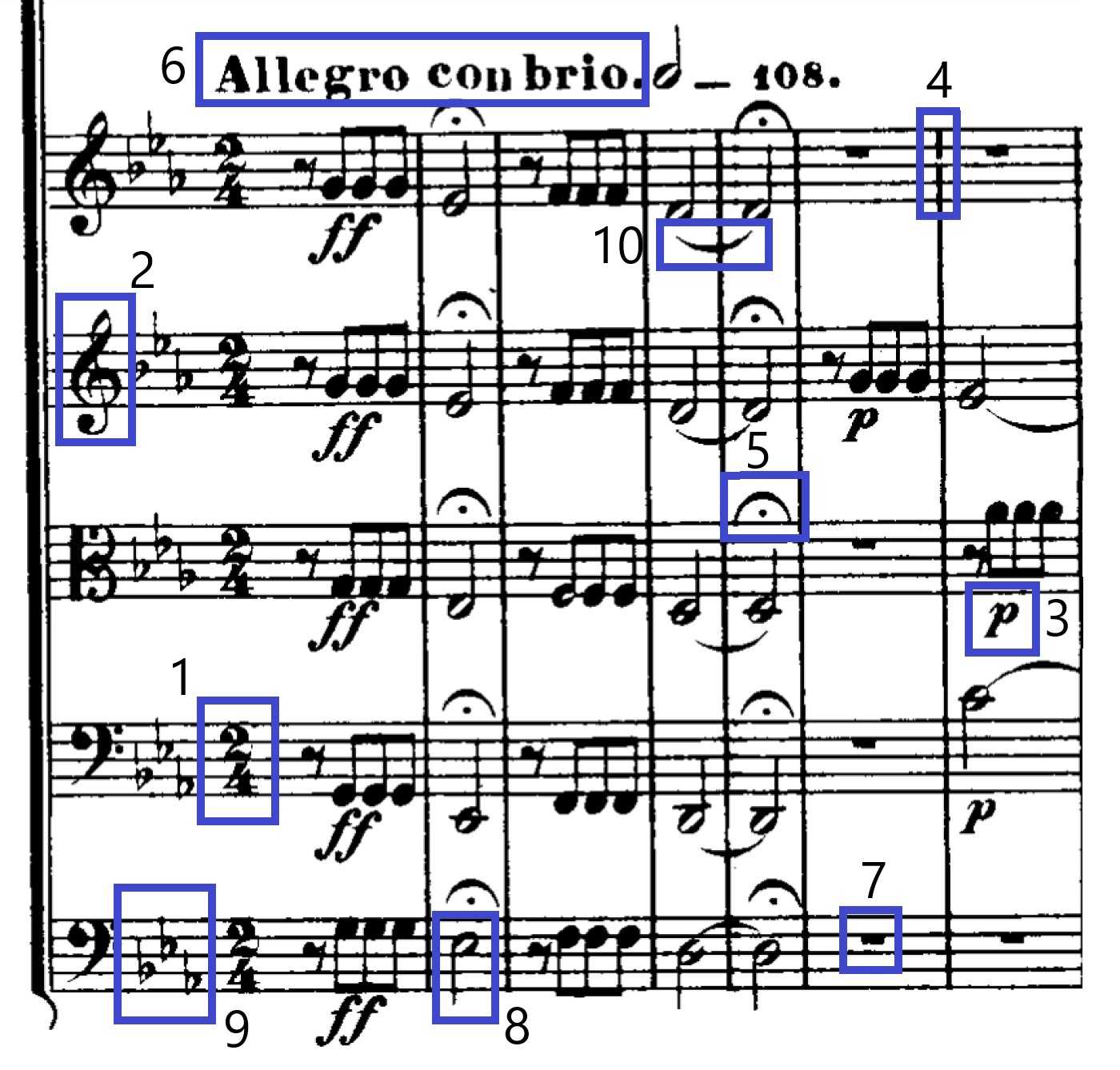
Why We Love Music: The Tools of the Trade Quiz
Behold seven of the most famous measures in classical music history: the opening to Beethoven's Symphony No. 5, Movement I. Indicated on the image are ten components of western musical notation. See how many you can name. American nomenclature is used.
A label quiz
by bmrsnr.
Estimated time: 3 mins.
- Home
- »
- Quizzes
- »
- Music Trivia
- »
- Other Music
- »
- Music Theory
